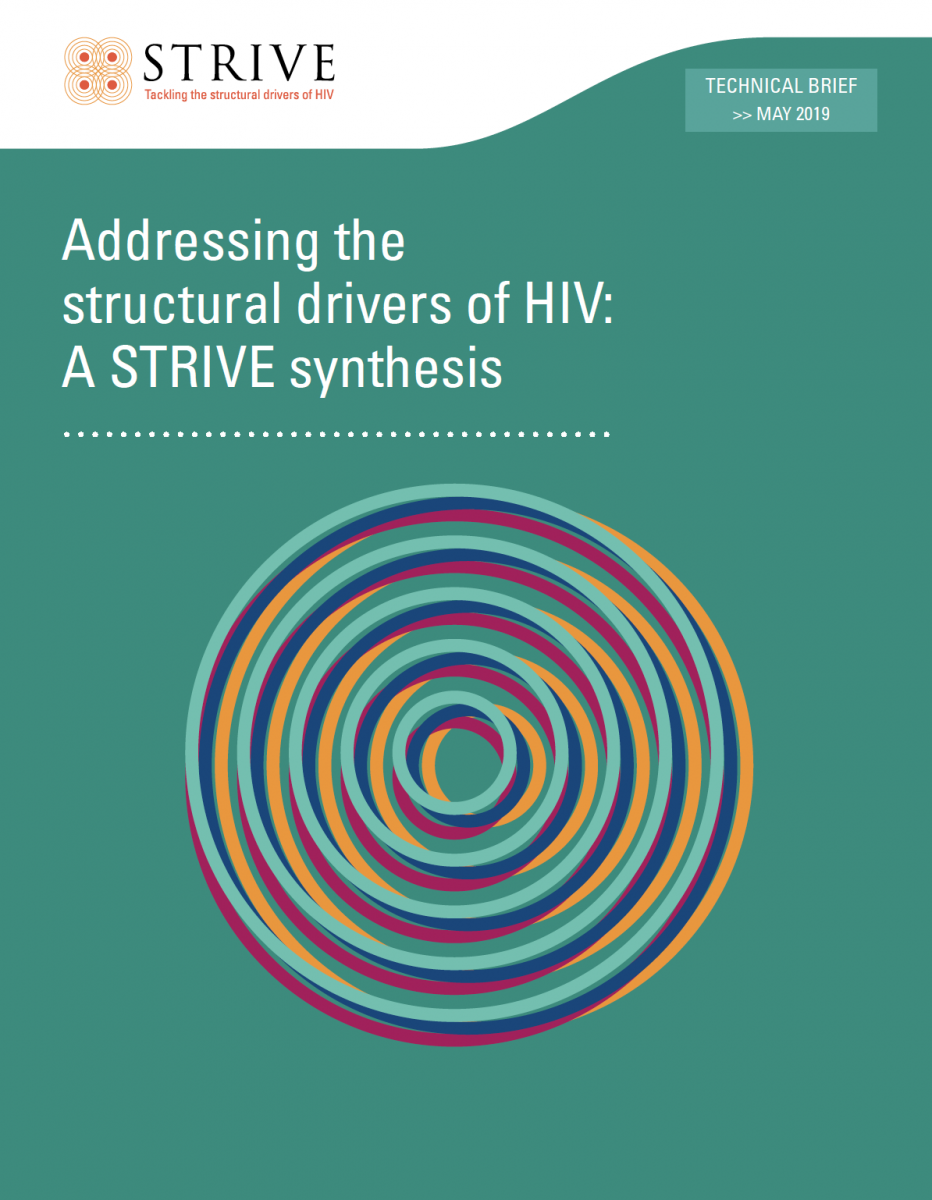This brief draws on eight years’ experience of STRIVE, to describe the ways in which structural drivers – including stigma, poverty, gender inequality and violence, alcohol availability – increase vulnerability to HIV and its spread.
The past two decades have seen significant progress in tackling HIV. Behavioural interventions have curbed rates of transmission. The scale up of HIV treatment has not only reduced levels of morbidity and mortality, but also created new opportunities for HIV prevention. However, mathematical modelling suggests that, with the current rate of antiretroviral therapy (ART) initiation, 49 million more new HIV infections will occur by 2035, and that even at best, with 90 to 95% coverage, treatment will avert only 60% of new infections.
STRIVE’s research shows that there is a complex relationship connecting HIV with different ‘upstream’ drivers of vulnerability. The pathways between them provide opportunities and challenges: opportunities from the potentially sustained impact of structural change, and challenges in prioritising and funding services and interventions. Indeed, evidence shows that interventions that seek to tackle these underlying vulnerabilities can achieve impact over programmatic timeframes, changing patterns of vulnerability, increasing access to and demand for biomedical interventions, and improving adherence.
The brief is organised around some of the key themes of the Consortium:
- HIV and violence against women and girls
- HIV-related stigma
- Adolescent girls and young women
- Biomedical interventions
- Development synergies and co-financing




